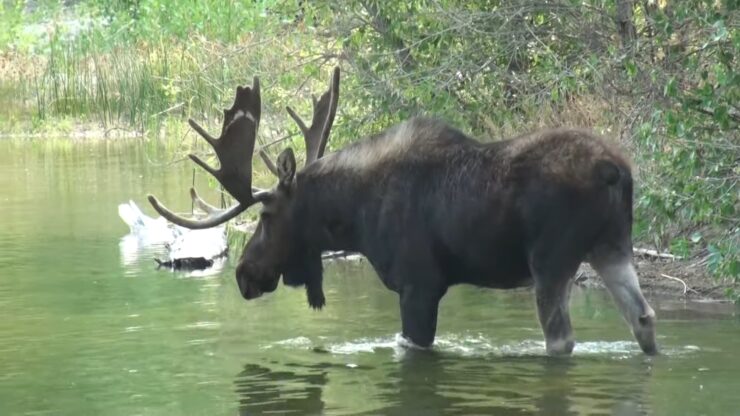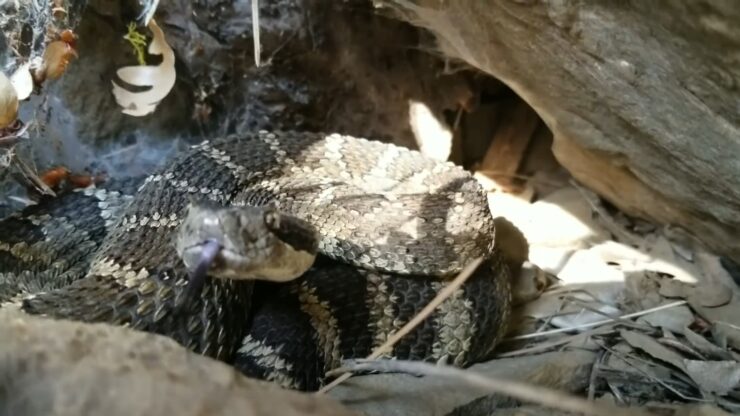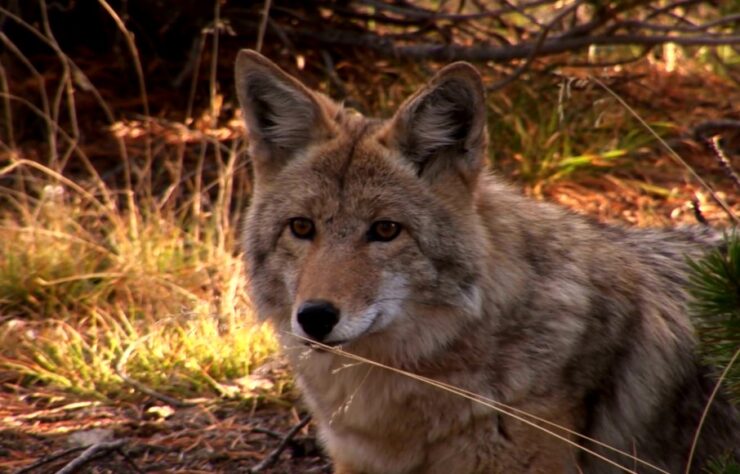Venturing into the wild? Knowing what lurks in the wilderness is not just fascinating; it’s essential. Buckle up for a thrilling ride as we take a deep dive into the dangerous world of Washington State’s wildlife.
When you think of Washington State, you might picture the bustling streets of Seattle, the towering peaks of Mount Rainier, or the iconic Space Needle. However, Washington State is also home to a diverse array of wildlife. Some of these creatures, while captivating to observe, carry inherent risks and should be respected from a distance.
In this article, we’ll take a journey through Washington’s wilderness, unearthing its most dangerous residents. Armed with knowledge, we’ll transform fear into understanding, helping you safely enjoy all the natural beauty Washington has to offer.
1. Cougars (Puma Concolor)
Regal, mysterious, and stealthy cougars—also known as mountain lions or pumas—are among the most dangerous predators in Washington State. Although encounters with humans are rare and attacks even rarer, when they do occur, the consequences can be severe.
Cougars have powerful hind legs, making them excellent jumpers capable of leaping up to 30 feet. In addition to their impressive athletic capabilities, these big cats possess formidable strength, capable of taking down prey four times their size.
If you encounter a cougar, avoid running, as it might trigger their chase instinct. Instead, make yourself appear larger, maintain eye contact, and back away slowly. If attacked, fight back using any tools or weapons available.
2. Black Bears (Ursus Americanus)

Black bears are the most commonly encountered bears in Washington. They’re generally less aggressive than grizzlies, which are not native to this state. However, they can still pose a significant threat if provoked, especially a mother bear protecting her cubs.
Most bear encounters can be avoided by making noise to announce your presence in bear territory, safely storing food, and keeping a respectful distance if you spot one. If confronted by a black bear, do not climb trees. They’re excellent climbers and can quickly reach you.
3. Moose (Alces Alces)

The majestic moose, while not typically aggressive, can be highly dangerous due to their sheer size. Males can weigh up to 1500 pounds and reach heights of 6.5 feet at the shoulder. Moose are particularly dangerous during the rutting season (autumn) and when a cow is protecting her calves (spring and early summer).
Although moose attacks on humans are relatively rare, they can inflict serious injury or even death when they do occur, often by trampling. If a moose charges, it’s recommended to run and put as much distance (and preferably a large object, like a tree or vehicle) between you and the animal as possible.
4. Northern Pacific Rattlesnake (Crotalus Oreganus)

Washington State is home to only one venomous snake—a species capable of sending a chill down the spine of many outdoor enthusiasts—the Northern Pacific Rattlesnake. This snake is found mainly in the eastern and central parts of the state, particularly in rocky and sunlit areas.
Although these creatures are venomous, they’re generally not aggressive unless threatened or cornered. They use their rattle as a warning sign when they feel endangered, giving ample opportunity to back away. If bitten, seek medical attention immediately. A rattlesnake bite is rarely fatal to humans with prompt and appropriate medical treatment.
5. Yellow Jackets (Vespula spp.)

On the smaller side of dangerous animals in Washington State are Yellow Jackets. These wasps have a particularly nasty sting that can be excruciatingly painful. They are more aggressive than bees and are willing to sting if they perceive a threat to their nest.
For most people, a Yellow Jacket sting is painful but temporary. However, some individuals may have allergic reactions that can be severe and require immediate medical attention. It’s advisable to keep a safe distance from Yellow Jacket nests and seek professional help for nest removal.
6. Ticks (Ixodes Pacificus)

Ticks are often overlooked in discussions about dangerous animals, but they pose a substantial risk due to their ability to transmit diseases. In Washington, the Western black-legged tick (Ixodes pacificus) is of particular concern because it can transmit Lyme disease.
Ticks are typically found in wooded and grassy areas. To prevent tick bites, use an insect repellent containing DEET, wear long pants and sleeves when hiking in potential tick habitats, and perform thorough tick checks after spending time outdoors. If bitten by a tick, it’s crucial to remove it promptly and properly to reduce the risk of disease transmission.
7. Brown Recluse Spiders (Loxosceles Reclusa)
Although not native to Washington State, sightings of the infamous Brown Recluse Spider have been reported occasionally. Renowned for its venomous bite, this small spider is usually not aggressive and only bites when disturbed.
Its bite may cause mild irritation in some individuals, but in others, it can result in necrotic skin—a condition where the skin around the bite starts dying. It’s essential to seek medical attention if bitten to prevent complications.
8. Coyotes (Canis Latrans)

Coyotes are a common sight throughout Washington State, thriving in both urban and rural areas. While coyotes generally don’t pose a significant threat to humans, they are known to attack pets, particularly smaller dogs and cats.
When encountering a coyote, never turn your back or run. Instead, make loud noises and make yourself appear larger to scare them off.
9. Bald Eagles (Haliaeetus Leucocephalus)

The Bald Eagle, a national symbol of the United States, is not generally dangerous to humans. However, these powerful birds are capable of inflicting harm with their sharp talons, particularly if they feel threatened or are protecting their nests.
Keeping a safe distance from their nesting sites, particularly during the breeding season, will ensure both your safety and their peace.
10. Steller Sea Lions (Eumetopias Jubatus)

The Steller Sea Lion is the largest species of sea lions, reaching weights up to 2,500 pounds. While not typically a threat to humans, these powerful marine mammals can be dangerous if provoked or threatened.
When observing these creatures, whether on a boat or onshore, it’s best to maintain a respectful distance.
11. Asian Giant Hornets (Vespa Mandarinia)

The Asian Giant Hornet, sometimes referred to as the “Murder Hornet,” made headlines when it was spotted in Washington State in 2020. The hornets pose a significant threat to honeybees but generally avoid humans unless threatened. However, their sting can be extremely painful and potentially deadly to those with allergies.
If you come across an Asian Giant Hornet or its nest, do not attempt to remove it yourself. Instead, contact local pest control or the Washington State Department of Agriculture.
Final Words
While Washington State’s wilderness can seem intimidating due to the potential threats discussed in this article, remember that these animals are a critical part of the ecosystem. Most wild animals prefer to avoid human interaction and pose no threat unless threatened or provoked.
By understanding the behavior of these creatures and taking proper precautions, you can safely enjoy the natural beauty of Washington. So pack your bags, respect the wild, and immerse yourself in the awe-inspiring outdoors that Washington has to offer!
Stay informed, stay vigilant, and remember, the wilderness is a place to be respected, not feared.

